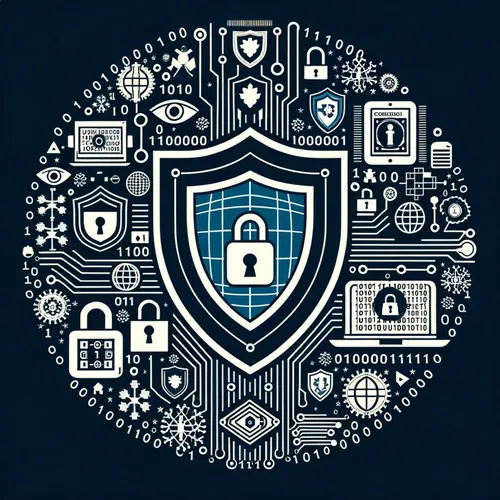Cyber Showdown: US Plays Catchup as China Hacks On! Shields Up, Folks!
- Author
- Quiet. Please
- Published
- Thu 26 Jun 2025
- Episode Link
- https://www.spreaker.com/episode/cyber-showdown-us-plays-catchup-as-china-hacks-on-shields-up-folks--66761618
This is your Tech Shield: US vs China Updates podcast.
Hello again, it’s Ting—your go-to techie with a knack for all things cyber, hacking, and the ever-twisting China-US rivalry. Let’s dive into this week’s update, because honestly, if you blinked, you missed something.
So, June 2025 is shaping up to be a month where digital shields are clashing louder than ever. On the US side, folks like those at US Cyber Command just rolled out a new joint task force with the Coast Guard—let’s call it Cyber Guard 25-2—to run port defense exercises at Fort George G. Meade. Imagine operators in hoodies and Coast Guard uniforms huddled over keyboards, stress-testing systems against simulated attacks. The goal? Make sure ports like LA, Baltimore, and Miami are Fort Knox-level hard to crack. Outside experts are already dropping notes about how layered defense and private-public partnerships are getting slicker, but man, the adversaries keep evolving[2].
Meanwhile, over at the Pentagon, the Defense Intelligence Agency, DIA, just dropped its 2025 Threat Assessment, and it’s crystal clear: China’s PLA has gone turbo on cyber and space warfare. They’ve realigned the Cyberspace Force and Aerospace Force under the Central Military Commission, and President Xi himself is holding the reins. Their game? Paralyze info systems, grab US tech secrets, and maybe—just maybe—chip away at America’s space superiority. The PLA’s Cyber Force and the Ministry of State Security aren’t exactly shy about targeting US government systems, IP, and even academia. Basically, data hoovering is their national sport now[5].
In response, Washington’s rolling out new advisories telling industries to patch, patch, patch. The Cybersecurity & Infrastructure Security Agency, CISA, is practically begging everyone from energy grids to universities to get on board with zero trust and multifactor authentication. Companies like Palo Alto Networks and Fortinet are pushing out new AI-driven threat detection tools, and honestly, it’s kind of like adding firewalls with a side of espresso—fast, adaptive, but still not immune to zero-day surprises[5].
Now, here’s my expert hot take: these moves are great, but they’re playing catchup. Tariffs and export controls, as a new Asia Times study points out, aren’t really slowing China’s industrial cyberespionage. William Akoto wrote that we’re missing the point if we think tech barriers alone will stop state-backed hackers. US companies are getting smarter, but the PLA’s state-backed hackers are like an army with endless backup accounts—when one door closes, they just break a window[3].
Emerging tech is catching up, though. Quantum-resistant encryption is in the pipeline, and more firms are talking about AI that doesn’t just detect threats but predicts them. The US government is also pouring money into Indo-Pacific cybersecurity partnerships, a generational effort to slow China’s digital creep, as the Center for a New American Security, CNAS, put it[4]. But honestly, we’re still in the early days.
So, where does that leave us? US cyber defenses are beefing up, but the PLA’s hackers and their cozy state sponsors aren’t sitting still. If you want to stay ahead, keep your eyes on the horizon, your updates on auto, and maybe, just maybe, start running your own red team drills. Because in today’s world, the next digital shock is always just a click away. Stay sharp, folks. Until next time, this is Ting, signing off.
For more http://www.quietplease.ai
Get the best deals https://amzn.to/3ODvOta
